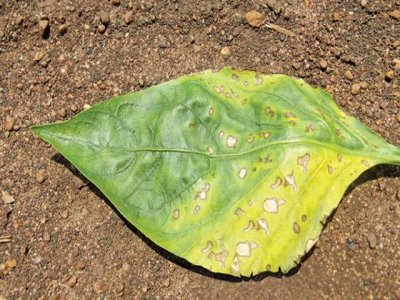Selecting the right nitrogen fertiliser

When it comes to vegetables, choosing the right nitrogen fertiliser is extremely important. For many US agronomists, ammonium sulphate is the fertiliser of choice.
Too much ammonium taken up by plants in hydroponic systems can cause scorch on leaves.
But their experience is with field crops, where nitrogen is unavailable at planting and little is required anyway.
Then, when the crop is growing rapidly, it becomes available as nitrate. With vegetables, each species has a different requirement and using ammonium sulphate is not advisable as there is a time lag between application and conversion to the nitrate form.
The lag is dependent on temperature and other factors.
As mentioned in a previous article, ammonium, a compound of nitrogen and hydrogen, is not readily available to plants in the soil. The nitrate is magnetically attached to soil colloids and is not in the soil solution itself.
Hydroponics
Hydroponic systems are an exception, as these have no organic matter to ‘catch’ ammonium – and so it can be taken up by the plants more easily.
This is not always a good thing, though. In soil, when the roots take in positively charged ammonium, they release equal amounts of hydrogen into the soil in order to maintain equilibrium within the plant.
However, hydrogen makes soil more acidic – you will not find free hydrogen ions in alkaline soils or solutions. The point is that ammonium fertilisers can cause acidity even in hydroponics systems.
Here, hydroxide is released as part of the equalising process. It then combines with hydrogen in the solution to form water.
If you apply all of the nitrogen you need in the nitrate form, the pH of the hydroponic solution will gradually increase. Plants can also store excess ammonium for later use.
But if there is too much of this nitrate, the leaves will be ‘scorched’, the damage resembling the ‘chemical burn’ when too much oil-based product is sprayed on the plants in hot weather.
In short, hydroponic growers need expert advice when it comes to applying fertiliser to the water.
Take into account the fertiliser needs of the plants and the mineral content of the water. You may also need to flush the system or medium from time to time to prevent imbalances being caused by the condition of the water.
Sodium, for example, can build up and cause a calcium deficiency and other problems. Calcium itself can build up, especially when water is extracted from boreholes in dolomitic formations.
Increasing the amount of ammonium applied can help to counter this.
In the soil
Moving on from hydroponics, too much ammonium in the soil can affect seed germination and damage tender roots.
Also, as noted, all nitrogen fertiliser has an acidifying effect on soil to varying degrees.
Ammonium sulphate has the greatest acidifying effect – and is used by some to reduce a high soil pH. In the ammonium form, 1kg of nitrogen requires 6kg of calcium to neutralise it. Make provision for this if you have to use ammonium sulphate.
Some producers consider using urea, as it contains a higher percentage of nitrogen than ammonium nitrate, making the cost per kilogram (of nitrogen) slightly lower.
Bear in mind, though, that with urea, nitrogen loss into the atmosphere due to volatilisation can be very high, especially with alkaline soil.
During warm weather, apply urea only before imminent rain or irrigation to minimise nitrogen depletion.
Most growers favour LAN, as it includes both nitrogen and ammonium. This provides a degree of safety, as after application only the nitrogen can leach, while the ammonium is held safely in reserve.
This gives much better control, which is very important with vegetables. LAN, of course, also contains limestone, a form of calcium intended to counter some of the acidifying effect of the nitrogen.
Có thể bạn quan tâm
Phần mềm

Phối trộn thức ăn chăn nuôi

Pha dung dịch thủy canh

Định mức cho tôm ăn

Phối trộn phân bón NPK

Xác định tỷ lệ tôm sống

Chuyển đổi đơn vị phân bón

Xác định công suất sục khí

Chuyển đổi đơn vị tôm

Tính diện tích nhà kính

Tính thể tích ao hồ



 5 Garlic Growing Tips You Don’t Want to…
5 Garlic Growing Tips You Don’t Want to…  How to Grow Japanese Yew Shrubs
How to Grow Japanese Yew Shrubs